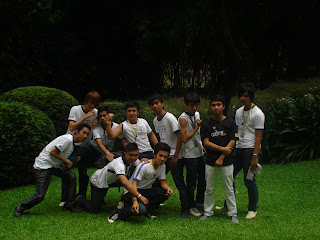A celebration in a wake of a dead relative may be offensive or improper to many cultures, but in the Philippines, especially in provinces, it is a norm that has been passed on from generations along with rituals and superstitious beliefs.
The mourning and the weeping are still present, but a happy and welcoming atmosphere would usually envelop the place to help the deceased on his journey to the afterlife.
Filipinos consider the deaths of relatives as opportunities to strengthen ties in the family. Long lost relatives, friends, and even relatives working abroad would re-unite to pay respect and honor the relationship they had with the deceased.
The basic format of death rituals and celebrations in provinces, where funeral parlors are not yet popular, are wake, vigils, burial, nine-day-novena, 40th day, and 'waksi' (death anniversary).
Vigils are held all throughout the night until the burial of the dead to keep the deceased company. People usually kill time during the vigil by eating, drinking,
gambling or just plain talking with one another.
During the time of the wake, the nearest kin is expected to sit beside the body in order to receive contributions or ‘abuloy’ to the visitors. In return, the family in mourning is expected to prepare food and refreshments for their guests.
The burial is a very solemn event. The family would view the body for the last moments and then the lid of the coffin is closed. Before the coffin is moved out of the house, members of the family say a prayer. The coffin is then carried out the main door feet first. This act symbolizes the exiting of a person, where if the head was to go out first, it is believed that the spirit of the deceased will not leave the house.
The coffin is then loaded on a hearse, a horse carriage, or carried by chosen individuals. The traditional funeral procession in the Philippines involves walking to the church and the cemetery, no matter how long the distance is. Today friends and other relatives who cannot participate in the parade can opt to ride a car during the procession.
After the burial a nine day Novena, groups prayers offered to the dead, must take place. These group prayers are held to help the deceased enter the gates of heaven. The fourth and ninth days are said to be the time where the soul of the deceased comes back. A food offering is left outside the door of the family’s house during these days to offer to the soul of the deceased.
The 40th day after the death of the person is celebrated because it is said that on that day the spirit of the deceased ascends to heaven.Exactly one year from the day of the death, a final mourning called ‘waksi’ is celebrated. In a waksi, the family prepares a feast and, together with the visitors, offers prayers to the deceased. Some provinces consider this as the day where the family can go back to wearing colored clothes.
Other superstitious beliefs
Other superstitious rules during the wake and the burial differ from province to province due to the difference in culture and beliefs. Here is a list of these rules that visitors should be well aware of to understand occurrences that are not present in the western culture.
* Feed the mourners, but don't walk them to the door when they leave.
* Don’t sweep the floor while the body is still lying in state or else other deaths in the family may follow.
* No tears should fall on the dead or the coffin as it would make a person's journey to the afterlife difficult.
* When someone sneezes at the wake, pinch him.
* During the wake the dead person's relatives must not take a bath.
* Food from the wake should not be brought home because it's believed that the dead touches all of it.
* After a funeral service, guests should not go directly home. This way the spirit of the dead won't follow them to their house.
* When carrying a coffin out for burial, it should be carried head first as it prevents the soul of the dead from coming back.
* Before a man comes home from a funeral he should light a cigarette from a fire at the cemetery gate to shake off spirits of the dead.
* The corpse should be positioned facing the door - the feet should be facing toward the door so it will allow the spirit or depart easily.
* Family members should wear black or white, colors are prohibited.
* Weddings, birthdays, and other social activities should not be celebrated for one year.
* The widow, children, and immediate family members are prohibited from carrying the coffin or else they will become ill and die.* While the casket is on its way to the cemetery or the church, relatives who preferred to stay at home should not have a glimpse of the casket or else someone in the family would die.
These beliefs may be true or not, but these make up a unique culture of how Filipinos practice the burial of their dead. Such culture is at the brink of existence once the older generations have gone by and the more globalized and westernized generation that is more rationale than superstitious, takes over.





















